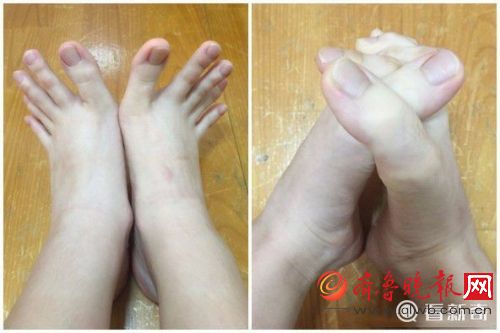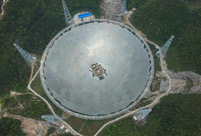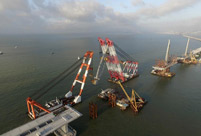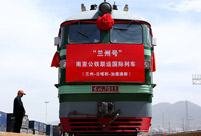

CHANGCHUN, July 19 -- Favorable policies are driving new energy car sales in China.
Figures released by the China Association of Automobile Manufacturers (CAAM) show that green car production and sales reached 177,000 and 170,000 units in the first half of 2016, up 161 percent and 162 percent, respectively.
Of all these vehicles, pure electric vehicles (EV) have shown a particularly impressive performance, with production of 134,000 units, according to the association.
In Changchun, a northeastern city, green cars are already on the road. At the city's ongoing international expo, visitors crowded the green car booths to inquire about prices, subsidies and vehicle specifications.
"Currently, you don't have to pay taxes when you buy a new energy car in China," said Dai Dali, General Manager of China FAW New Energy Vehicle Branch.
One of the company's hybrid cars, which can run 50 km per charge, costs about 160,000 yuan (24,000 U.S. dollars), saving about 14,000 yuan in tax.
"An ordinary fuel car costs about 0.7 yuan per km to run; a hybrid costs only about 0.4 yuan," Dai said.
In Changchun, more than 300 such hybrid EVs are running on the city's roads every day, he added.
Many home-grown brands are competing for a share of the market.
Guo Ai, regional representative of JAC Motors, said the company's new energy cars are "doing quite well" in cities like Beijing, where government subsidies help. A low-configured model costs a around 70,000 yuan.
Price is just one factor. In China, drivers complain about poor driving ranges and shortened battery life in winter.
"We are improving our technology to increase ranges, and improve cold weather performance," Guo said.
Chinese companies, including BYD and FAW, have or plan to introduce new EV models.
However problems remain with insufficient charging facilities and lower subsidies.
There were about 81,000 public charging stations in China at the end of June, up 65 percent compared to the end of last year. The number of private charging stations rose 12 percent from the end of2015 to more than 50,000, according to the National Energy Administration. But investment is "small" and "lower than market expectations."
State Grid, the biggest investor, hosted two bidding sessions in the first half of this year, but drew a mere 1.4 billion yuan in investment, far lower than the 5 billion target.
The CAAM predicted 700,000 sales by the end of this year, but sales in H1 failed to reach one fourth of that target and government subsidies are on the wane.
China started subsidizing green cars in 2010, with up to 50,000 yuan for each hybrid and 60,000 yuan for a pure EV. The subsidies have gradually decreased since 2014.
Businesses are turning to making green SUVs, popular in China. FAW has begun producing an electric version of its Besturn X80, though it is unclear when it will be on the market.
Various media outlets have reported that eight domestic brands will release 10 types of electric SUVs in 2016, with most based on their fuel car models.
 Who Will Fit The Chinese Roles In Game Of Thrones?
Who Will Fit The Chinese Roles In Game Of Thrones? China's Hubei Shennongjia added to World Heritage List
China's Hubei Shennongjia added to World Heritage List "Straddling bus" starts production in east China
"Straddling bus" starts production in east China Girl goes viral for finger-long toes
Girl goes viral for finger-long toes Five made-in-China hi-tech breakthroughs
Five made-in-China hi-tech breakthroughs HK-Zhuhai-Macao Bridge to open to traffic
HK-Zhuhai-Macao Bridge to open to traffic China opens its first combined transport service to Nepal
China opens its first combined transport service to Nepal Students take stylish bikini graduations photos
Students take stylish bikini graduations photos Charming dancing students pose for graduation photos
Charming dancing students pose for graduation photos Top 10 livable Chinese cities
Top 10 livable Chinese cities Top 20 hottest women in the world in 2014
Top 20 hottest women in the world in 2014 Top 10 hardest languages to learn
Top 10 hardest languages to learn China’s Top 10 Unique Bridges, Highways and Roads
China’s Top 10 Unique Bridges, Highways and Roads Barring Russia will tarnish Olympic spirit
Barring Russia will tarnish Olympic spirit Wukan disputes highlight conflict of interest at heart of rural development
Wukan disputes highlight conflict of interest at heart of rural development S.Korean companies in China say they’re not impacted by anti-missile system
S.Korean companies in China say they’re not impacted by anti-missile system Couples say dedication, not time, determines the strength of a marriage
Couples say dedication, not time, determines the strength of a marriageDay|Week